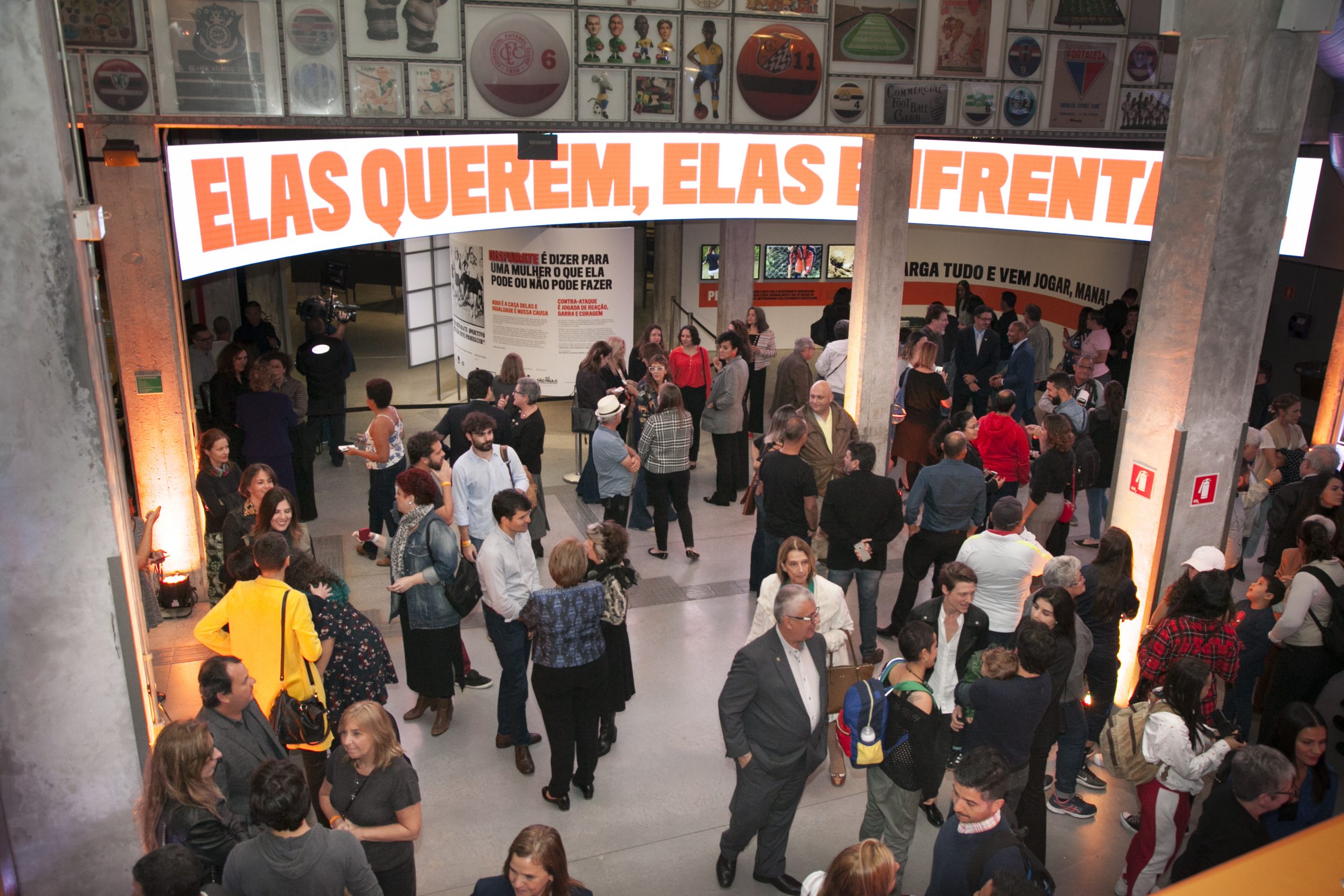COUNTER-ATTACK! Women in Football
From May 20th to October 20th, 2019
COUNTER-STRIKE! Was more than an exhibition. It was a manifest for equality in the field. The Football Museum recovered stories of resistance of athletes and amateurs who played even when women were prohibited by Law to play football in Brazil, between 1941 and 1979. A history forgotten by many and that is related to the current situations of the sport.
Period
28th, may, 2019 – 20th, october, 2019
Exhibition finished.
Public
170.000 visitors
Venue
Museu do Futebol
Pacaembu Stadium
Praça Charles Miller, s/n
São Paulo – SP
Why counter-strike?
In the game of football, a counter-strike occurs when one of the teams recovers the ball and advanced quickly towards the goal, without letting the opposing team set its defense. This extremely exciting play was the metaphor chosen to tell the story of the sport, prohibited by law in Brazil for decades.
In the COUNTER-ATTACK! Women in Football exhibition, the word VICTORY has a much broader meaning that just winning matches and championships. COUNTER-STRIKE! tells the story of how women had to fight for their right to play the game, for uniforms that matched their bodies, to participate in sports management, to become referees, work in the press, and also for the right to stand in the bleachers.
It was also a counter-strike inside the Football Museum. Inaugurated in 2008 as a space to celebrate the Brazilian identity expressed by means of the sport, our museum only included women players in the long-term exhibition in 2015. Until we had an exclusive exhibition for women’s football, four years later, it was a long path of listening, building relationships with the athletes and managers, and understanding that this story should be told from the perspective of those who suffered the most with it: the women themselves.

Who is afraid of girls who play football?
COUNTER-ATTACK! Women in Football had four curators: ex-player and manager Aline Pellegrino, historian Aira Bonfim, journalist Lu Castro, and researcher Silvana Goellner. The scenography was executed by Daniela Thomas. The educational scripts were elaborated by a team of educators of the Football Museum. Dozens of women were involved in the several stages of conception, assembly, and management of the exhibition.
As a result, for the first time in history, the visitors of the Football Museum were equally divided between women and men, who historically accounted for 70% to 80% of the audience. We shed a light on the period of prohibition of women’s football, putting the current status of the sport today in perspective and – most importantly – to make younger generations of boys and girls more aware of the sexist structures that dictated (and dictate) the course of football.
The year of records in women’s football
Holding an exhibition about women’s football was an old wish of the Football Museum’s team, but a combination of factors allowed it to happen in 2019. One of them was the Women’s Football World Cup held in France. Since the beginning of the year, we realized that the sport would receive some attention. The feminist movement had received a new impetus a few months earlier, and even the brands started to realize the potential of visibility of the championship.
In fact, several records were broken this year: the audience of the World Cup was more than one billion viewers. For the first time, broadcast in open TV allowed the audience in Brazil to grow, with a record 30 million people watching Brazil x France for the round of sixteen. There were record crowds in stadiums, including São Paulo, with 28,000 people attending to Corinthians x São Paulo for the finals of the women’s Paulistão championship.

Offside Museum
As part of the activities of the COUNTER-ATTACK! Women in Football exhibition, we signed a partnership with Google for the Offside Museum, a collaborative action that gathered stories and memories shared by the public about the women who darted to play during the period of prohibition of the sport in Brazil, between 1941 and 1979. The pictures and documents shared were curated and will be conserved by the Museum, which prepared six virtual exhibitions regarding the subject and provides all materials by means of the Google Arts & Culture platform. Acess.


